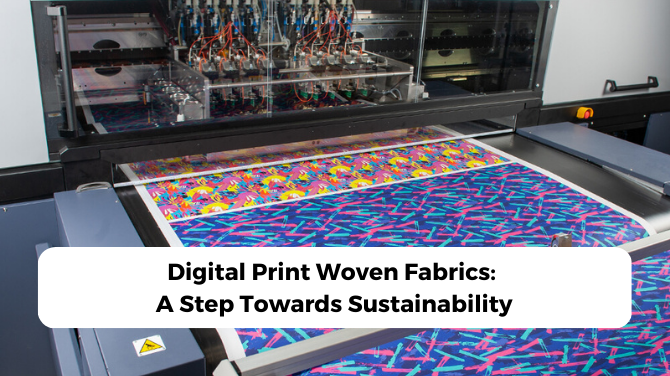The world of textiles is a complex place to be. With hundreds of processes, terminologies, and jargon, a newbie could easily lose his way around. In this Ultimate guide to yarn dyed fabrics, we will take a dive into the world of yarn dyed fabrics. Buckle up!
Table of Content:
- What are yarn dyed fabrics?
- How to easily identify yarn dyed fabrics?
- What is the difference between yarn dyed and piece dyed fabric?
- What are the other common fabric dyeing processes?
– Garment dyeing
– Warp beam dyeing
– Direct dyeing
– Stock dyeing
– Package dyeing
– Skein dyeing
– Top dyeing - Which season is best for yarn dyed fabrics?
- What are the uses of yarn dyed fabric?
- Are yarn dyed fabric expensive?
What are yarn dyed fabrics?
Yarn dyed fabrics are those fabrics that are made using pre-dyed yarns. It is an ancient method of weaving and textile manufacturing where spools of yarns are dyed before weaving the fabric. The only difference today is that all the processes involved are mechanized or automated for more efficiency.
Let quickly look at the differences between fabric and yarns for the newbies here.
Yarns are individual threads that make up the cloth. The result of a weaving process is the fabric.
“The lengthwise yarn in a fabric is called warp yarn and weft yarns are woven across the length.”
The designs imprinted on a yarn dyed fabric are the result of sophisticated engineering efforts. These are the cool unique characteristics of yarn dyed fabric. Most of the fabrics that have stripes, checks, plaids, gingham, dotted or cross patterns are yarn dyed fabrics.
The Dobby type weaving process, where tiny crosses, dots, or lines are woven into the fabric is also a common type of yarn dyed fabric.
Denim is a perfect example of yarn dyed fabrics. The same goes for jackets and raw-looking apparel.
How to easily identify yarn dyed fabrics?
- The front and back of the cloth do not match with each other.
- Fabrics have slightly raised textures woven into them.
- Yarn dyed fabrics look more artisanal and rustic.
What is the difference between yarn dyed and piece dyed fabric?
Dyeing can be done at any point of time in a manufacturing process. It can happen at yarn stage, fabric stage, or even apparel stage. Depending on the client’s requirements, relevant dyeing processes are considered.
In the piece dyeing process, the cloth is dyed after the weaving process. This is the most common type of dyeing in the world. Some of the techniques used for piece dyeing are:
- Jet Dyeing
- Jig Dyeing
- Pad Dyeing
- Beam Dyeing
“A typical drawback of piece dyeing is that tightly woven fabrics that are used as uniform or upholstery could lose its color quickly. This is because of poor penetration of dye during the dyeing process.”
What are the other common fabric dyeing processes?
As we discussed in the previous section, dyeing can be done at any stage in the production process. Let’s look at some of the popular dyeing processes prevalent today.
- Garment Dyeing
Garment dyeing is the process of dyeing finished garments. Typically done of t-shirts or pants. The process involves placing the garments in mesh or net bags and then immersing them in vats of dye. They are loosely packed for even coloring.
- Warp Beam Dyeing
An economical way of dyeing quantities of yarn. An entire warp beam is wound onto a perforated cylinder and then dyed using a dyeing machine.
- Direct Dyeing
The process of putting dye directly on textile without the use of an affixing agent.
- Stock Dyeing
Stock dyeing is a yarn level dyeing process that is done before the yarns are spun. The loose materials are put into large vats that are heated for required results.
- Package dyeing
A package is a term used to refer to a spool of yarn. Such packages are dyed using a machine. It is a less expensive method of dyeing. The drawback of this method is that the yarns lose their softness.
- Skein Dyeing
Skein dyeing is the process of dyeing yarns that are loosely wound into a dye vat. Yarns for knitting are typically processed in this way.
- Top Dyeing
Dyeing process prior to yarn being spun. This is a dyeing process popular for wool yarns. Here, the long and short yarns are separated and only the long ones are used.
Which season is best for yarn dyed fabrics?
Different seasons require apparel designed to adapt to its conditions. The summer season requires breathable and lightweight fabrics to bear the heat of it. Whereas winter seasons ask for thick multi-layered fashion.
Since yarn dyed fabrics are not season-oriented, they can be worn in any season be it suits the person wearing them.
On a lighter side, wear what you feel like. Don’t stress over the season. Fashion should not follow a season but an occasion. (Debates are welcomed in the comments)
What are the uses of yarn dyed fabric?
Yarn dyed items are found in our everyday items like home décor, fashion garments, accessories, and so on.
Popular yarn dyed uses:
- Tablecloth
- Kurtis
- Curtains
- Fabrics
- Other upholsteries
Are yarn dyed fabrics expensive?
The most expensive yarn dyed materials sold today are items that are hand dyed. With machines making most of our clothes, man-made clothes or fabrics are rare and expensive.
In this article, we discussed how to natural dye clothes at home. Anyone can dye their materials at home with proper techniques.
Artisans around the globe dyes items by hand thus increasing their value tremendously.
Yarn dyed fabrics are our specialty. If you are looking for yarn dyed fabrics, explore our collections. Looking for custom manufacturing, contact us.











